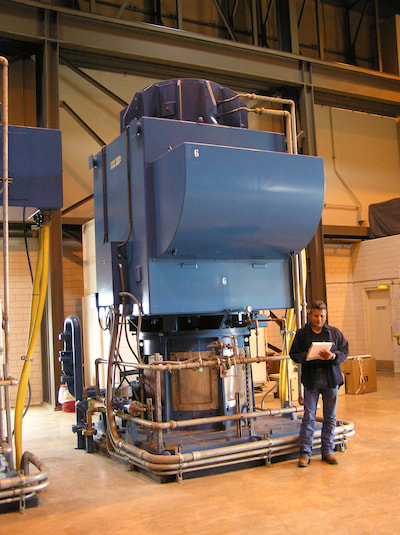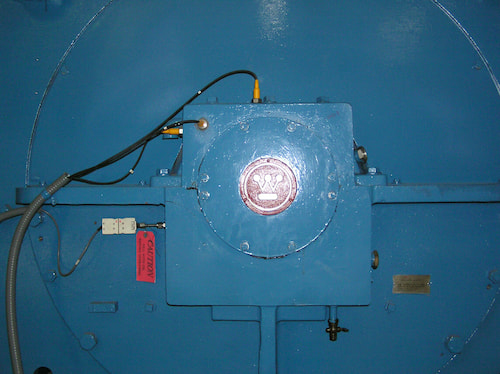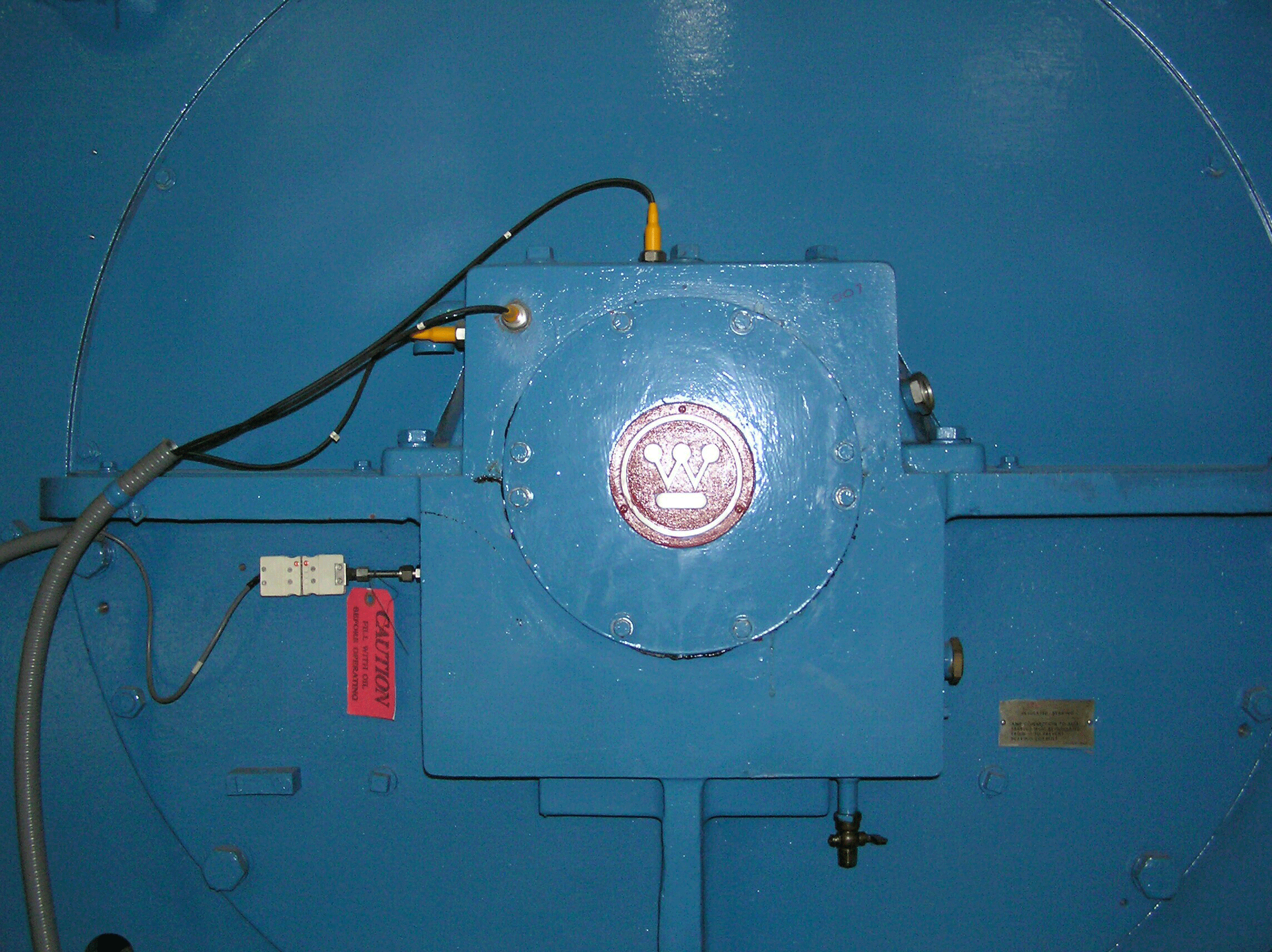The reliability of this pumping station had to be improved to keep up with demand and prevent service outage.
Tarrant Regional Water District (TRWD) was established in 1924 as a result of Fort Worth area flooding and the need for a reliable water supply.
Today, supply and flood control activities span a ten-county area in North Texas. Currently, TRWD provides raw water to approximately 1.5 million end users through 32 municipal and industrial wholesale customers, with the service area population projected to increase to 2.66 million by 2050. The supply system consists of four large supply reservoirs and three major raw water transmission pipelines.
The performance of ten new 5000-hp motor/pump units that went into operation in early January this year was carefully monitored right from the beginning as part of an ongoing TRWD program to stay ahead of the growing demand for fresh water in Fort Worth and the surrounding area.
Even with these new units in place, up to 80 percent of system capacity will soon be needed just to meet prime-time demand, reducing the amount of backup available in case mechanical problems occur. A failure at one of the unmanned pumping stations could severely reduce the delivery of water from our four reservoirs. Compounding matters, operations and maintenance staffing has decreased by 30 percent over the past ten years, while power costs continue to go up.
Clearly, a high level of mechanical reliability is necessary to operate at 80 percent capacity with reduced maintenance. The solution was a vibration monitoring and analysis technology that provides a continuous flow of performance and condition data from the remote stations. This becomes the basis for predictive maintenance at all of the pumping stations.
“We don’t just sit and wait for an alarm or for something to go wrong anymore,” according to Boyd Miller, pipeline operations manager at TRWD. “Vibration levels are monitored on a continuous real-time basis to make sure they remain within prescribed limits. In addition, the accumulated data are analyzed monthly, looking for any indication of a developing problem or a potential failure.”
Since online monitoring was initially adopted in 2001, overall system reliability has increased significantly with fewer unplanned outages due to unexpected failure of critical equipment. Specifically, TRWD has experienced:
- A 20 percent reduction in emergency costs
- Lower overall maintenance costs
- 100 percent increase in the accuracy of factory acceptance testing
- 50 percent reduction in staffing requirements for remote stations
Factoring in all improvement costs, the District’s annual savings are on target, with the original cost-justification estimates that projected a 10-year economic benefit of $306,000. \
Table 1 – Cost Justification
10-year cost of online system $94,000 higher than periodic vibration service
$400,000 cost avoidance with vibration data based on actual problems:
- $120,000 – excessive thrust on three units
- $166,000 – broken rotor bars on two units
- $114,000 – failed motor bearing
Online monitoring provides 2,920 times more trend data
Added value:
- Trending and operational parameter determination
- Enhanced decision-making, planning, scheduling, and forecasting
District savings could actually increase with the new pumping capacity. Many costs are fixed, while the avoidance of repair costs will improve the overall benefit. In effect, the payback period will be shorter.
The Challenge
In the past, maintenance workers conducted daily visual inspections and monthly predictive maintenance evaluations to detect such threats as bearing failures, broken motor rotor bars, or flow problems such as cavitation or re-circulation. This was both time consuming and expensive, as personnel had to travel a 150-mile circuit each day to reach all eight stations in operation at that time.
Vibration analysis using portable equipment was partially successful, but no performance data was available to identify evolving pump and process problems, which could go undetected for long periods. Unexpected failures were all too common, followed by high emergency maintenance costs.
A New Approach
In 2001, 34 pump/motor sets ranging in size from 1000-hp to 5500-hp were equipped with CSI 4500 machinery health monitor systems from Emerson Process Management (Knoxville, TN), which continuously measure vibration levels, perform advanced processing, and calculate specific analysis parameters.
The multiple stations were tied to a central host via a frame relay network, with the host connected to the plant network.

5,500-hp vertical pump lineup at the Richland Chambers Lake Pump Station.

5,500-hp vertical pump for scale.
The condition of all critical pumping equipment can be observed from the host, where pump status and alarms are displayed by the AMS™ Suite: Machinery Health Manager software. In addition, all trend data is stored for advanced predictive diagnostics. This workstation has full diagnostic, analytical, and reporting capabilities, allowing maintenance decisions and plans to be made from one central location.

Vibration sensor pick-up on a 5,000-hp horizontal pump. Typical set-up for all horizontal pumps – 1,000-hp through 5000-hp.
Since the online monitor of the central host sits beside the SCADA host at the TRWD Control Center, SCADA operators who control the pumps can monitor the status of equipment as well. When a potential problem appears, maintenance personnel can further evaluate and confirm alarms using the central host to perform advanced diagnostics. Maintenance supervisors can initiate work orders that feed into the utility’s computerized maintenance management system (CMMS).

Vibration sensor pick-up on a 2,500-hp horizontal induction motor. Typical set-up for all horizontal motors -- 1,000-hp through 5000-hp.
Monitoring continues independently if the relay network is interrupted for any reason. Memory built into each monitor stores data while the Ethernet network is down. When the frame relay network is restored, the central host is updated and normal operation resumes.
Achieving Reliability
Online vibration monitoring now identifies equipment issues before reliability is threatened and capital expense is incurred. Other signs of progress over the last four years include: improved pumping system reliability, easier operational tuning, more effective acceptance testing, and the prioritization of maintenance work.
Pumping system
Since implementing the online monitoring system, no unexpected pump failures have occurred, although problems such as misalignment, loose mounting, cracked rotor bars, and irregular flow have been identified, monitored, and corrected.
Real-time data collection and alarming provide the opportunity for timely decision-making with ample time to plan and act before a service interruption occurs. In addition, the collected data is trended and analyzed so that parameters for normal and abnormal operation are now recognizable. Online monitoring has given operations and maintenance personnel the ability to “diffuse the ticking time bomb” and maintain system reliability.
Operational tuning
Optimum system efficiency is obtained with minimal booster tank levels providing adequate net positive suction head for the pumps, but these levels are not constant because of varying reservoir levels. With our system, the operators use vibration as a process variable to balance the system. If a tank level falls below minimum, flow noise at the pump is noticed, quantified by the online monitoring system, and presented to the operators.
In addition, the online system alerts operators to such resonance and flow problems as cavitation and recirculation. Integrated online monitoring assists the operators in running the system cooler and smoother for greater output and longer equipment life.
Acceptance testing
Integrated online monitoring is being used to effectively identify and correct problems before component damage occurs. If trouble develops during the warranty period, accurate documentation of operational performance and trends is available to verify any claims.
TRWD personnel practicing predictive maintenance based on the online monitoring system have detected pump and/or motor defects on at least four different occasions. These problems, all of which were identified before the equipment was put into service, had to be corrected by the manufacturer.
Work prioritization
With a smaller maintenance staff, it is important to prioritize work and eliminate unnecessary tasks. The online monitoring system provides efficient collection, analysis, and reporting of pump condition data, which automatically comes to the operator or analyst in a format appropriate to their skills. As a result, maintenance work can be based on the actual condition of equipment rather than recommended time intervals.
In the past, pumps and motors were rebuilt on a fixed schedule, regardless of condition. By establishing ranges for operational parameters, current and future mechanical condition can be determined with greater accuracy, often allowing maintenance to be delayed.
Efficiency and mechanical condition are now carefully considered during annual planning, resulting in a shift from a reactive to proactive maintenance culture.
Warranty Issues
Having the online vibration monitoring capability in the new pumping stations is a big advantage in dealing with warranty issues. Now, the motor/pump units must meet vibration and noise requirements in addition to normal performance standards.
If there is any substantial change to established vibration levels during the warranty period, documented evidence will be available in case of a dispute. That has been a valuable assurance during the early operation of the new pumping stations.
Future Direction
We intend to eventually link the online system to the CMMS, enabling the automatic generation of work orders. When assigned tasks are completed, equipment histories within the online monitoring system will be updated automatically.
For now, online monitoring has enabled the TRWD to establish a proactive predictive maintenance environment.
Pumps & Systems, October 2006

